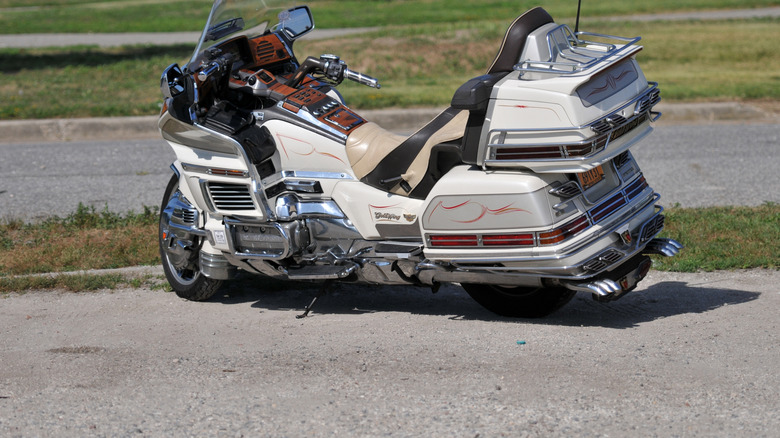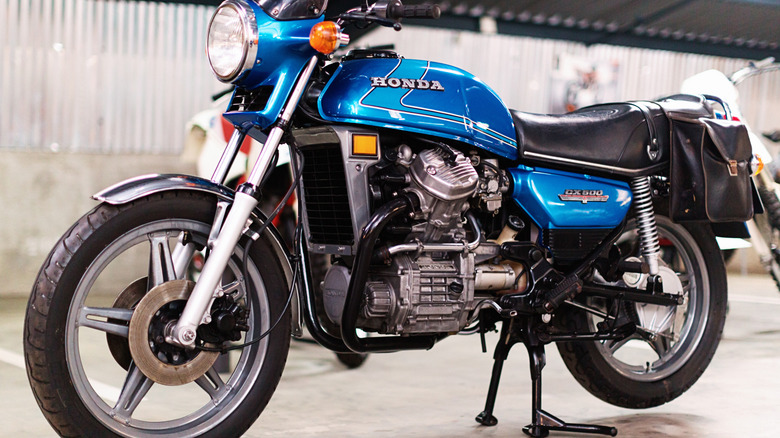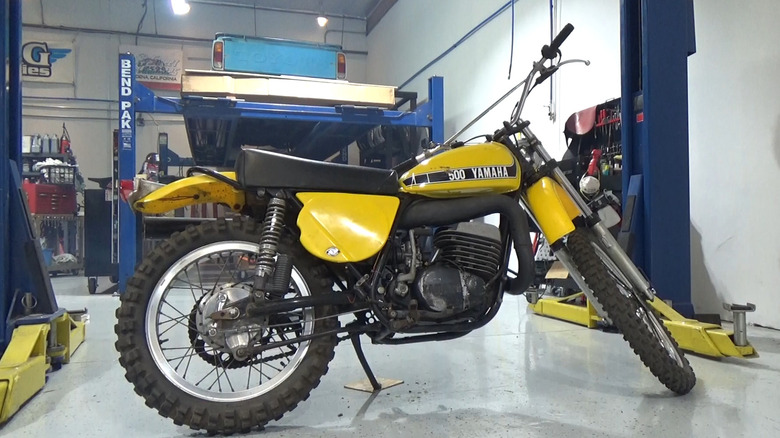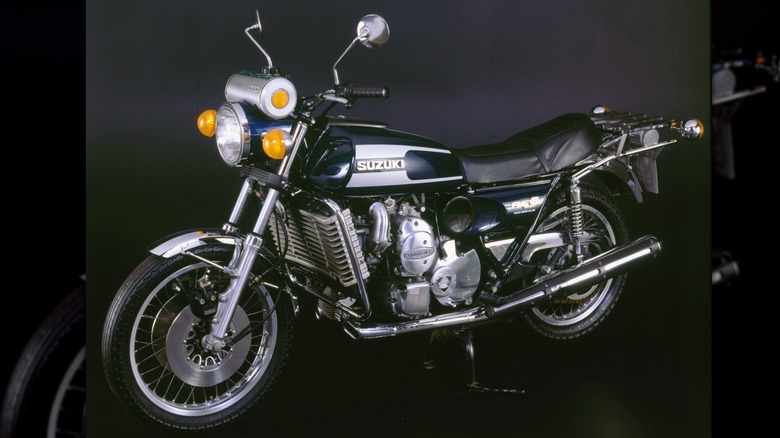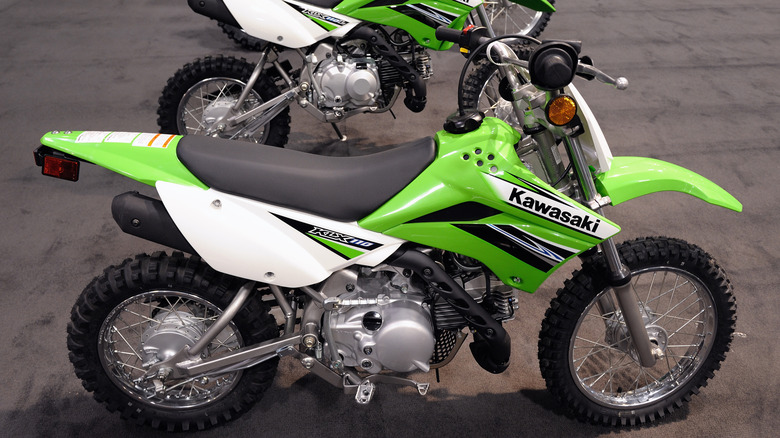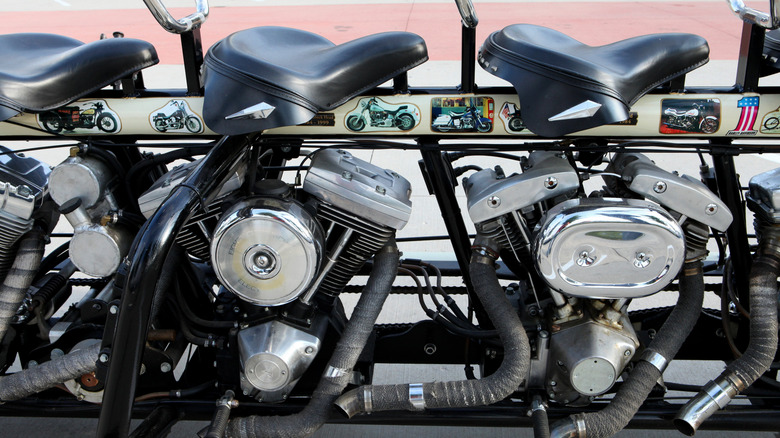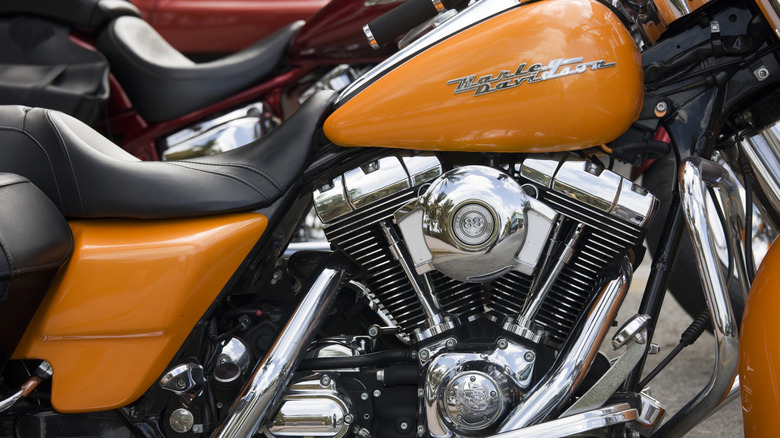The 5 Best And Worst Motorcycle Engines Built By Major Builders
The history of the motorcycle engine is long and storied, and ever-evolving. From extremely reliable motorcycle engines to the powerful Harley-Davidson crate engines, there are major bike engine types to suit every type of motorbike. However, not all are created equal. Some models can tank decades of abuse, some perform really well, and some are just really cheap — and others turn out to be total dogs.
No company only makes "good" engines, and no company only makes "bad" ones, and what defines "best" and "worst" differs across brands. An engine might be mechanically sound, but commercially disastrous. It could sell well, but prove catastrophically unreliable. Or it might simply ignite fuel externally, which rather settles any debate about its quality.
Making a bike engine is a juggling act between power, efficiency, reliability, cost, and serviceability. Get it right, and you create a legend that riders discuss reverently decades later. Get it wrong, and something catches fire, starts in reverse, or requires owners to replace parts that should never need replacing. And yes, all three of those things will show up further down in this article.
So then, here are the best and worst motorcycle engines from the five major bike brands in the U.S. today — Yamaha, Kawasaki, Harley-Davidson, Honda, and Suzuki.
Best: Honda 1,833cc inline-six engine
The first Honda Gold Wing, the GL1000, was targeted squarely at big American touring bikes like Harleys, and really cemented Japan as a serious competitor in the ring. From 1988 onward, Gold Wing models like the GL1500 began to ship with a six-cylinder engine that went through a purported 60 different revisions. The modern generation, dubbed the GL1800, ships with a much-improved version of that same flat-six engine that made the GL1500 famous. In terms of figures, the modern GL1800 comes with, as we mentioned, an opposed flat-six boxer engine that displaces 1,833cc, making 125 hp at 5,500 RPM, along with 125 lb-ft of torque at 4,500 RPM.
Both the bore and the stroke on the 1,833cc engine are 73 millimeters, and Unicam camshafts are used to give the best of both SOHC and DOHC worlds, The engine itself has a four-stroke power cycle with 24 valves, which works out to four per cylinder. The compression ratio is a solid 10.5:1, which might not sound like much — but that's before you learn that 10.8:1 is the compression ratio on a 2025 Kawasaki Ninja 650R, which is a dedicated sport bike, not a luxury tourer. There are two main types of transmission offered with this beauty of an engine, which are a six-speed regular gearbox, as well as a seven-speed DCT or dual-clutch transmission.
Worst: Honda 497cc V-twin engine
This engine was found in the Honda CX500, which is becoming quite popular these days as a cafe racer donor bike, but that's beside the point. Wherever the CX500 shone in terms of design, aesthetics, and more, it was let down by the engine. Among a list of other things that could be its own feature, the cam/chain tensioners on this engine were failing to the point where we'd call them a consumable item, rendering the entire power block useless. The issue got so bad that a massive recall (No. 78V259000) was issued for the 1978 model CX500, where the dealers would install a special kit to prevent the engine from locking up and causing an accident.
Also, while the shaft drive that featured on many of the CX-generations was quite durable, it was also weighty — and in a bike with minimal displacement, that extra weight would matter. Though the engine did improve, the initial version of the 497 was an absolute dog. A prime example of the troubles that early-generation CX500s would give owners is that the engine needed what became referred to as a "triple bypass" at 20,000 miles. See, there were three different parts that were liable to fail on the 497cc engine — the cam tensioner, the stator, and the seals behind the impeller. And since they were so likely to fail, it was considered wise to change them anyway when a major service was being done at 20,000 miles.
Best: Yamaha 1,101cc four-cylinder engine
Back when this engine came out, Yamaha had just finished experimenting with its four-cylinders, and this was its pièce de résistance, so to speak. It was to be found in the XS1100, a motorbike that could run the quarter mile in 11-ish seconds back in the 80s.
When introduced, the engine in the XS1100 displaced 1,101cc made up via a 71.5-millimeter bore and 68.6-millimeter stroke across four cylinders. This setup featured a 9.2:1 compression ratio and produced a commendable 95 hp alongside 67 lb-ft of torque at 8,500 and 6,500 RPMs respectively. The engine also made SlashGear's list of the most reliable Yamaha engines that have ever been produced. It's worth noting that when it debuted, this power unit would have been the largest Yamaha motorcycle engine ever out into production.
It would have also been Yamaha's first four-stroke four-cylinder unit. Just as the 497cc Honda engine that we covered above, the 1,101cc engine in the XC1100 featured shaft final drive — a move that was very much a departure from the belt final drive (or chain final drive) standards of the time. And while shaft final drive is indeed known to make an engine more durable, more reliable, and gives it better longevity; it does also add to the weight and inefficiency of the engine. Striking a balance between those things is quite hard, but Yamaha nailed it — at least in this engine.
Worst: Yamaha 498cc one-cylinder engine
Yamaha has had its ups and downs in the motocross segment, but this one has to be rock bottom. In the early 1970s, Yamaha decided to enter something into the sub-500cc motocross segment, so it came up with a leviathan dubbed the SC500 scrambler. We call it a leviathan because it tipped the scales at an eye-watering (for what's supposed to be a adventure bike) 243 pounds. But that and other quirks of the chassis aside, it was the engine that was an unforgivable waste of metal. It displaced 498cc across one cylinder that was equipped with reed valves, with final power output figures of 44 hp and 37 lb-ft of torque at 6,500 and 6,000 RPMs respectively.
The power cycle was of a two-stroke nature with a stroke of 70 millimeters, a bore of 95 millimeters, and the transmission that the engine was paired to was a four-speed. According to reports, the engine would frequently sputter and stall, and the power delivery was inconsistent, almost to the point of unpredictability. And taking just one look at the torque curve for the SC500 would prove that claim — it literally looks like a squiggle drawn freehand. Now, for obvious reasons, a smooth torque curve is preferred, but that's only possible in an ideal world — but the SC500 was really something else. Lastly, among many other problems the 498 was also known to start in reverse gear on occasion.
Best: Suzuki 1,340cc inline-four engine
Managing to house an inline four-cylinder with a bore of 81 millimeters and a stroke of 65 millimeters in the 95-inch long chassis of the Suzuki Hayabusa is a feat in itself. The stroke and bore figures gives this powerplant a total displacement of 1,340cc. Given that the Hayabusa is a sports bike, most would expect the compression ratio to be quite high, but people are still surprised to learn that it is 12.5:1. In terms of power figures, the engine produces 196 hp at 9,800 RPM, and 114 lb-ft of torque at 7,200 RPM, with a relatively smoothed-out torque curve that gives riders predictability at both low and high speeds; something that can be crucial to winning or survival.
And this engine has heritage too, because it is an iterative update to the legendary 1,298cc inline-four engine that allowed the original Hayabusa to boot the Honda CBR Blackbird and the Kawasaki Ninja ZX11 out of the top spots in terms of top line speed, as the 'Busa topped out at more than 190 mph in 1999, its debut year. The current-generation 1,340cc engine in modern Hayabusa models came about after Suzuki increased the stroke by 2 millimeters in 2008 and it was this year that the compression ratio hit 12.5:1, up from 11:1.
Worst: Suzuki RE-5 rotary engine
These days rotary engines are considered to be one of the worst motorcycle innovations to come about, but that wasn't the case in the 1970s, when Suzuki launched the RE-5. The bike featured a full rotary engine, fitted with satin-black covers on the silencers as opposed to chrome, which is what a vast majority of brands use even today. And the reason for that is (allegedly) that Suzuki were worried that the copious amounts of heat given off by the rotary were liable to burn the passengers on the bike, and chrome on the exhaust silencers would only accentuate that.
Coming back to the rotary itself, the engine displaced 497cc with a single rotor that sent power to the rear wheel via a five-speed transmission. Power figures were pretty decent; we'll give it that, coming in at 62 hp and 55 lb-ft of torque — remember, it had only a half-liter in displacement. However, while rotary engines do indeed produce more power, are more efficient, and have fewer moving parts, they're also bothersome to work on, bad on gas, super-heavy on emissions, and they also really chew through their internal parts. In fact, in a 2017 article, RideApart called the RE-5 "The worst of all worlds," which sums up the bike, and especially the engine, pretty nicely.
Best: Kawasaki 499cc three-cylinder engine
This beastly engine was found in the now-legendary Kawasaki H1 Mach III, nicknamed the Widowmaker, a bike that opened America's eyes to the capabilities of Japanese motorcycles. It displaced 499cc across three cylinders with a stroke of 58.8 millimeters and a bore of 60 millimeters, and was paired to a five-speed transmission. With a compression ratio of 6.8:1 that was kicked off through Mikuni carbs, this small but mighty half-liter power unit managed to produce 60 hp and 42 lb-ft of torque.
Looking at the torque curve also reveals the over-engineering that must have gone into development of the engine, as it affords the rider a healthy amount of grunt at any point along that curve. At no point would the H1 Mach III "jump" between acceleration and cruising; if you held down the throttle, it just would go. All of the above features combined with the manageable weight at 414 pounds managed to give the bike a quarter-mile time of 12.96 seconds and a top speed of 118 mph.
While both those figures were seriously impressive for the time, a lot of that translating to real life would come down to riding position and rider profile. However, the fact remains that this was the engine, and by extension, the bike that put Kawasaki on the map for the U.S., and that would've been enough to make it great on its own.
Worst: Kawasaki 112cc one-cylinder engine
For the first time so far, an engine makes our list of the worst motorcycle engines thanks to it being inherently unsafe for the rider and those around them. We're talking of the 112 engine found in the KLX line of Kawasaki motorcycles, namely the KLX110. As the name suggests, the engine displaced 112cc across one cylinder, mated to a four-speed transmission that featured chain final drive. The engine had a stroke of 53 millimeters along with a bore of 53 millimeters, and compressed the mixture in a ratio of 9.5 to one. All of that put together meant that the 112cc unit made 7 hp at 7,500 RPM along with a paltry 6 lb-ft of torque at 4,000 RPM.
There's an argument to be made that this would have made a brilliant first motorcycle for teenagers or novice riders. However, the engine had a fatal flaw: it leaked fuel, which could ignite externally and result in a fire. The issue was deemed so serious that more than 4,000 units produced in the early 2010s were recalled, and owners were told not to use the bikes at all until a remedy fix was completed. It was this issue that put the KLX110 units from the early 2010s on lists of Kawasaki bikes to avoid.
Best: Harley-Davidson Evolution V-Twin engine
Without a shadow of a doubt, the best engine ever to come out of Harley-Davidson's Milwaukee house is the Evolution, fondly referred to as the "Evo" by people. It pulled Harley out of its rut after the disastrous AMF years. Launched in 1984, the Evo was Harley's one chance to get back the market share and loyalty that it had lost, and was it ever a resounding success. A displacement of 1,340cc spread across two cylinders with a bore of 89 millimeters and a stroke of 108 millimeters, with a combustion ratio of 7.4:1 was settled on for the final product. This entire package was laid out in the now-classic V-twin configuration at 45-degrees that produced 55 hp and 75 lb-ft at 3,500 RPM.
The transmission was a five-speed unit that turned the rear wheel via belt final drive, bringing the whole thing together quite nicely. This Evo engine featured prominently in many iconic Harley-Davidson models from the 1980s, such as the Dyna Glide, Softail line, Sportster, and Electra Glide. Now, there have been more powerful engines, like the insane Screamin' Eagles lineup. There have been more reliable ones, like the Big Twin 103. There have been ones with more displacement, better tuneability, and more. But no engine has been as impactful to the brand as the Evolution, so it makes our list.
Worst: Harley-Davidson Twin Cam 88 engine
This entry is specifically about the Twin Cam 88A. Subsequent variants fixed a lot of issues, but the reputational damage had been done. The biggest problems with the Harley-Davidson Twin Cam 88 engine were that it would leech contaminants into the lubrication elements on the bike, it would feed plastic bits into the fuel pump, it would vibrate like anything, and was generally an unreliable hunk of metal. When the lubrication gets contaminated (whether with plastic shavings or metal filings or anything else), and then that lubricant circulates around the internals of the engine, it can cause a large amount of damage to areas that are both critical and hard to reach for repair.
Further, when tiny bits of plastic get into the fuel pump, they can lead to all sorts of issues. For instance, they can slip through the mesh that is supposed to catch debris and clog the tiny injector nozzles, leading to erratic or reduced performance. They can also block the flow of fuel partially, making the fuel pump motor work harder and wear out faster.
Another major issue was the premature (and frequent) failure of the tensioners for the timing chain, which killed many a-Twin Cam 88 engine in its day. As a result of all these major and several other minor problems that dogged the 88 line, readers will find that many of the bikes on lists of worst Harley motorcycles come with the Twin Cam 88 engine.

